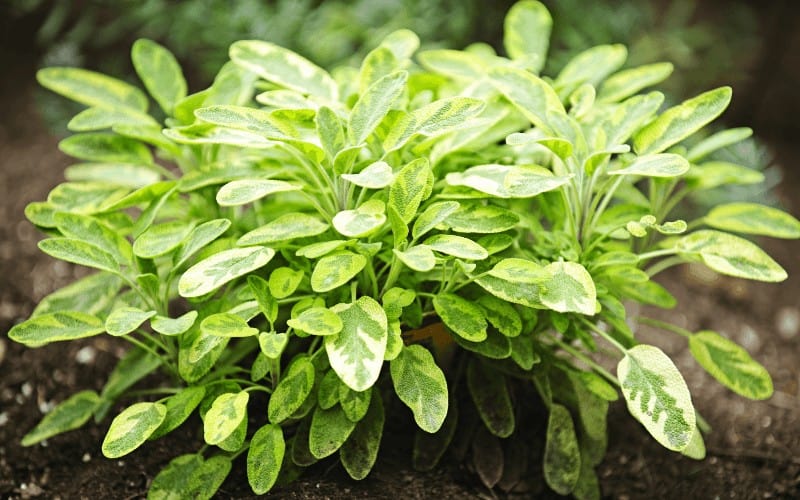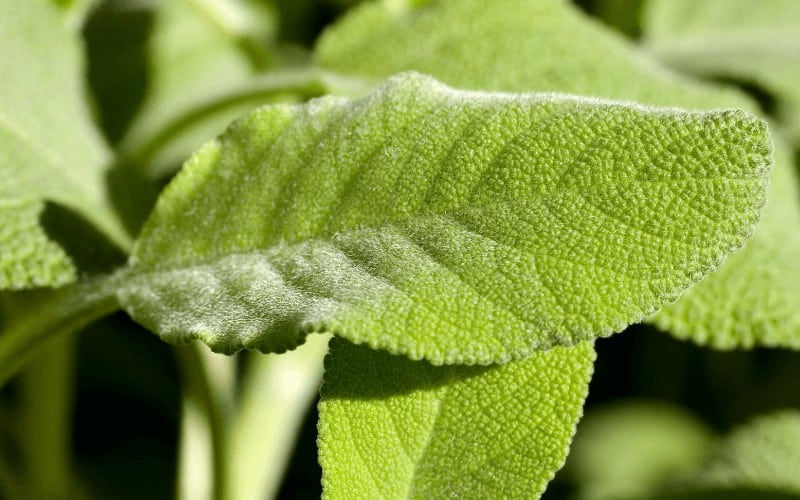Can you grow sage from cuttings? Well, the simple answer is YES, sage plant can be grown from cuttings and in this article, you will learn how to grow sage from cuttings, even if you've never done it before.
Botanically known as "Salivia Officinals," sage plant is a perennial herb sage known for its aromatic herb and decorative qualities.
Recommended by health practitioners for its health-related benefits such as fertility and digestion enhancers, the sage plant is an undemanding sun-loving plant and can be seen virtually anywhere around the world.
Interestingly, you can grow sage plant from seed or from cuttings of an existing sage, either way, it does not require a lot of effort.
Now, let's quickly look at how you can grow sage plants from cuttings. But before that...
Table of Contents
When Do You Take Cuttings From Sage Plants?

How can you plant sage cuttings without the actual stem? Unlike every other perennial herb, gardeners consider this plant one of the easiest to grow from cuttings.
Preferably when you take softwood cuttings in the morning of summer or spring when the bushes are still blooming with extra energy and fresh growth from the parent plant.
Note: Take cuttings in the morning so that they don’t wilt quickly. If the weather has been dry, water the plant a day before cutting.
More so, when cutting, make sure the sage or sides you are cutting area free from flower buds.
How Do You Take Cuttings From Sage?
Where can you get healthy sage cuttings? Getting some fresh springs of sage directly from the plant is mostly acceptable, but if it is not at your disposal, try getting some fresh sprigs of sage from grocery stores or farmer’s markets.
Just know the right species for you!
Taking cuttings from sage is easier than you would think, you just need the right tools and knowledge to safely carry out the process.
As for the required tools, you’ll need a pair of gloves, a good garden pruner, knife or sharp, sterile, and a ‘healthy’ sage plant.
First, make sure you sanitize your materials carefully so you don’t unconsciously spread any disease, even while having a healthy sage.
Now wear your glove properly. Use gloves that would allow you to hold your sage firmly and effortlessly.
Get sharp, sterile or pruning shears, gently cut the desired part, preferably the tip, and at a 45 degrees angle, be careful not to give your sage unwanted tears or crush the stem upon cutting.
Note: You do not have to cut the full branches, the non-flowering sprigs should do. You might get the sprigs when the season is getting colder and stems becomes woody in the end.
The favorable length for root length is between 4-5 inches, especially at the top showing it can produce fresh growth.
Having discussed when to cut cuttings from a sage and how to do it, let's now look at how to grow sage from cutting.
How to Grow Sage from Cuttings

Since you already have your cuttings with you, you’ll need just a good drainage pot, fine sand, and a little bit of care to grow your sage plant.
Remember the cuttings are now little sprigs, so you can start by planting them in a potting mix to ensure it has good drainage.
Fill a 5-inch deep pot that has good drainage holes with a mix of equal parts of peat, perlite, and sand. Pour water into the pot until it drains from the bottom.
The best soil temperature for sage plant is between 60-70°F. When planting, do not plant too early or late. Planting early may not grant the plant the ability to grow well, while planting late might cause stunts in growth due to heat.
Furthermore, make sure the stem of your springs is in good contact with the soil so it grows immediately into the soil without suffocating.
As you may know, the sage plant roots poorly without a growth hormone, so for a faster and healthier root system, use a growth hormone.
Note: Using the growth hormone, be it gel or powder form, would require you to wait a longer period before consumption- approximately one year.
But if you are not using a growth hormone, you can establish a root structure before planting in the soil.
You can place your sage plant in a glass of water, and since the sage is in good drainage soil, expect it to produce roots within 3-5 weeks.
Depending on the time and condition of propagating, the time for growth would vary. It will show some indications of growth after 6-8 weeks.
To grow your sage plant, be sure to store your plant in a warm humid area. Consider it a perfect choice if you have a greenhouse! More so, if the weather is neither harsh nor too cool, the plant could thrive outside too.
It prefers humid areas because it reduces the rate at which the sage lose water through their leaves since it is yet to yield roots and without roots, the cuttings cannot replace any water lost.
Expose your sage plant to indirect light to full sun, but avoid the harsh or scorching sun.
Make sure the soil is always moist but not soggy to prevent root rot. To avoid over-watering, you can use a clear plastic bag over the pot and secure it with an elastic band around the pot.
Be sure it doesn’t touch the cuttings, and for the best results, place sticks longer than the cuttings amongst it, this is to sustain water.
Your sage plants are not susceptible to disease and pests if it is in good condition. Either way, look out for spider mites, thrips, and spittlebugs.
Even though these pests can attest to the plant’s benefits, yet they are unwelcomed guests that should be starved with organic insecticides like pyrethrum or insecticidal soap or oil.
Further tips
- Be sure to repot the plant after some weeks if it grows vigorously.
- Expose your sage plant to a good ventilated environment, so it doesn’t undergo Downy mildew. However, you can use sun spray if it undergoes mildew.
- Your sage plant will do best in gritty soil, more so, plant them, amongst other perennial herbs for best results.
- Full sun, good drainage, and good air circulation keep the sage plant blooming and healthy.
- You need to replace the sage plant every 4-5 years when it becomes woody. This is to enhance growth.
Conclusion
Now that you know you can plant sage cuttings as well as when to take cuttings from sage, where you can get healthy sage cuttings and how to grow sage from cuttings, you can be sure to confidently grow a healthy perennial herb effortlessly even though it is your first time!
Just follow this guide intently and be sure to enjoy the whole mastery process in growing sage from cuttings.
Hopefully, you have a good time growing your sage plant from cuttings!
Related Articles:
- Can You Grow Rutabaga From Cuttings?
- Fruit Trees That Grow From Cuttings
- Plants That Can Be Grown From Cuttings In Water




